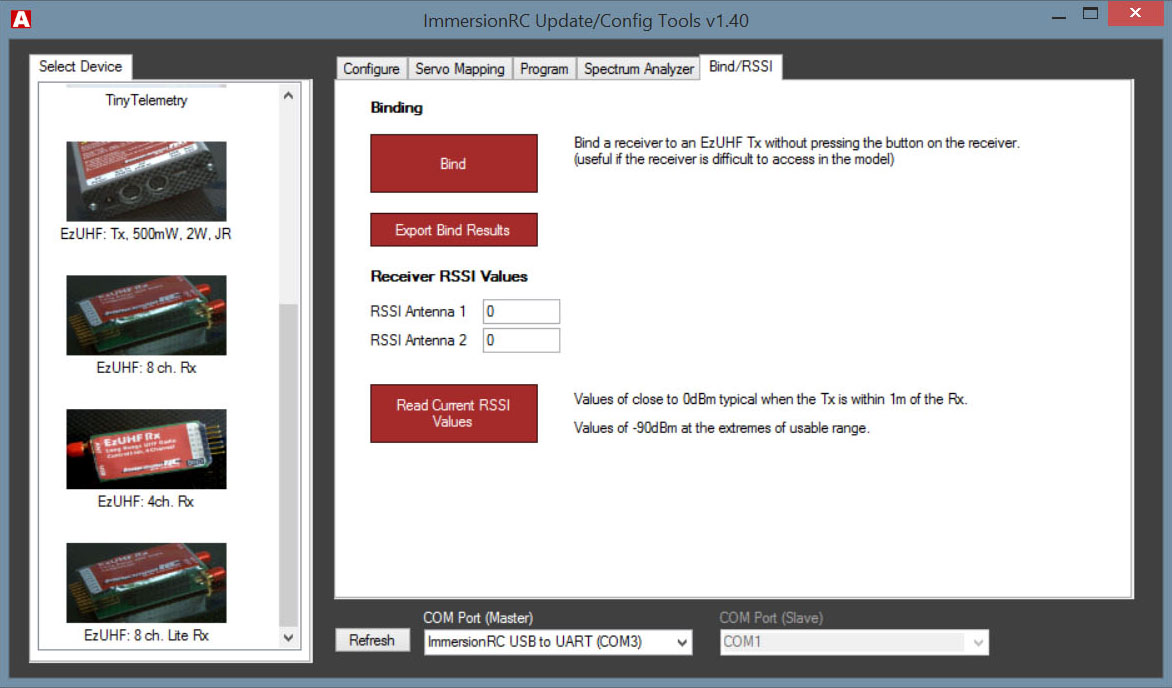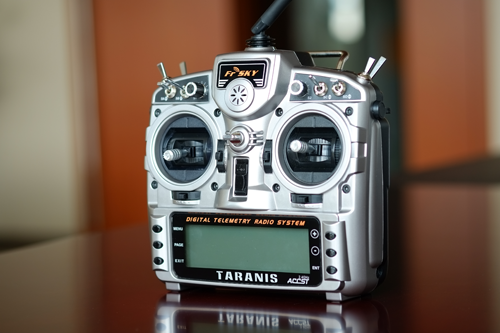Team BlackSheep Discovery Pro: Building A $3000 Quadcopter
Is it any surprise that PC enthusiasts also dabble in other technology-driven hobbies? Our editorial team recently purchased a high-end quadcopter to gauge the accessibility of first-person-view flight. Follow along as we build and critique the process.
Remote Control: FrSky And ImmersionRC
The combination of FrSky’s Taranis X9D, ImmersionRC’s EzUHF system and DJI’s Naza-M V2 enables remote control of the Discovery Pro. It also requires the lion’s share of software-based configuration.
When I received my Long Range Set from TBS, the Taranis transmitter was configured to communicate at 2.4GHz. Extending its range necessitated an upgrade to ImmersionRC’s EzUHF JR module, which offers up to 500mW of power in the 430 to 440MHz frequency range. Of course, the Taranis supports the JR standard, so it was easy to pop off its back cover, line up a few contacts and slide the module into place (even if a manufacturing defect kept it from seating fully).
Similarly, I had no trouble connecting the module via USB to my Lenovo Helix and confirming its control software. The same went for ImmersionRC’s EzUHF Long-Range RC RX, which sits on the Discovery Pro and receives input from the transmitter. Both components require matching firmware (already installed in my case). Should you find occasion for an update, ImmersionRC Tools is the utility you’ll use. It also facilitates customization of frequency settings, servo mapping, real-time spectrum analysis, antenna configuration and channel count. Oh, and if you plan to exploit PPM technology, and I highly recommend you do, that’s set in ImmersionRC Tools, too. Switching to PPM allowed me to hook the Long-Range RC RX up to TBS’ header block through just two servo cables: one carrying the PPM signal and the other for switching between cameras. Otherwise, each PWM channel interfaces through its own cable.
Binding the transmitter and receiver so that they’re able to “talk” to each other is a straightforward process akin to pairing Bluetooth-enabled devices. Don’t count on the link between you and your quad becoming a bottleneck in this build.
Configuring the Taranis controller is decidedly more time-consuming—but not in a bad way. The FrSky radio system offers audible alerts for the settings, values and alarms you want announced (particularly relevant if you have FPV goggles on). Additionally, a model system allows you to import a fellow enthusiast’s Discovery Pro setup. It supports up to 16 channels and is highly programmable. In short, you end up with a ton of freedom that simply needs to be harnessed.
This isn’t something I would have ever figured out on my own after reading through FrSky’s manual. Even the YouTube and forum walk-throughs weren’t complete. I needed three or four different sources to get my Taranis working the way I wanted. There’s the basic throttle/rudder/elevator/aileron setup, of course. But you’ll also want to add gimbal tilt/roll control, along with a way to flip between the FPV camera and GoPro. The real zinger was customizing a three-position flight mode switch to toggle between the Naza controller’s GPS, Attitude and Manual modes, all of which can be overridden by a second switch triggering Failsafe mode. After dialing in all of that, I still hadn’t touched 10 of the 13 property pages defining my Discovery Pro model.
The radio is mostly a pleasure to use, though. Movement in the control sticks is confident, the toggle switches snap into each position, FrSky’s backlit LCD readout is easy enough to navigate and the chassis is rugged enough to take abuse without imposing too much heft. It’d be nice if the built-in antenna was removable, and the bundled Ni-MH battery is pretty crummy. However, the Taranis is based on open-source software, allowing anyone to download its code to make modifications. The radio is also significantly less expensive than competition from Futaba, which saved me quite a bit of cash.
Get Tom's Hardware's best news and in-depth reviews, straight to your inbox.
Current page: Remote Control: FrSky And ImmersionRC
Prev Page Weighing In On TBS’ Discovery Pro Next Page Flight Control: DJI's Naza-M V2-
blackmagnum Sunbathers beware! On another note: 3k dollars would build an awesome gaming machine, but getting some fresh air is all good.Reply -
Shankovich A company in Toronto called DreamQii made one that's around $1000 for the kit and is modular. A much better deal IMO, and it comes with a sturdier gimbal. Can you guys review that one? Kinda want one but not so sure about the whole thing.Reply -
Bondfc11 The radio in the photos is a dead match for the JR radio I use for flying my helicopter.Reply -
g-unit1111 Pretty sweet but if I had $3,000 to spend money on something, this would be like last on my list. :lol:Reply -
qlum I have looked at quad copters quite often but every time I look I come to the same conclusion: To expensive for something I will get bored of pretty soon anyway.Reply
Anyway the last time I was nervous about something I did was when I had to solder a serial connection on a bricked router. It was a first for me but all went far far smoother then I ever expected. -
d_kuhn Soo... while this looks like a very cool drone, if you're looking at your first buy you might want to look a bit more modest... like the DJI Phantom 2 Vision+... $1300 buys you a nice quadcopter with a stabilized camera. That's a lot less $$$ to lose when you auger in on your maiden flight.Reply -
desert_beagle great article.. just expecting the delivery of my TBS Disco + Taranis today.. yes, it's expensive, but it's a lot of fun.. )Reply -
quadcopterhq Really great overview of what it is like to build your own custom quadcopter, one of the most coherent and in-depth ones I've seen so far. To be honest, all the work makes me want to just recommend buying an off-the-shelf ready-to-fly option like the DJI Phantom! Of course, this model is much more capable and for any pro the customization is necessary (and enjoyable potentially too) to be able to get the video results required.Reply
What kind of flying time does the rig have? And could you attach a larger, heavier camera if you swap in a different gimbal or are you limited to the GoPro line?


